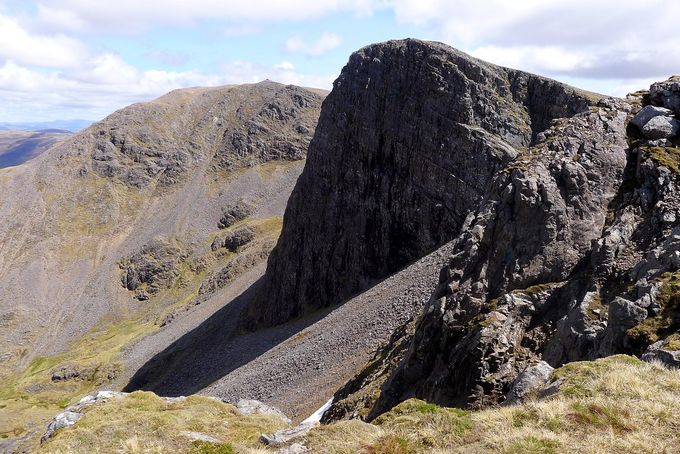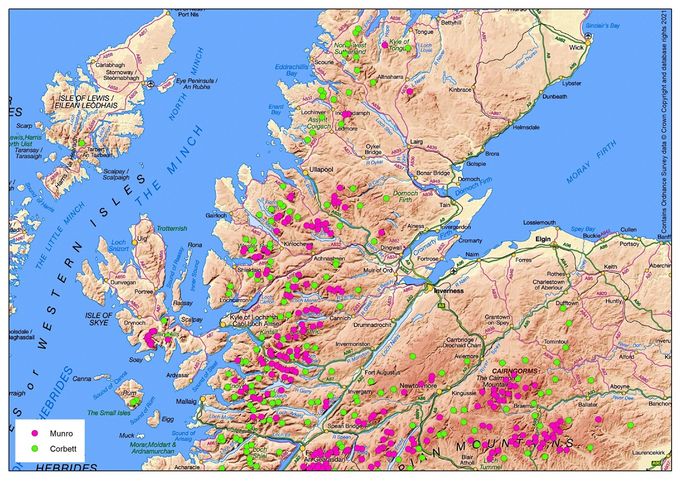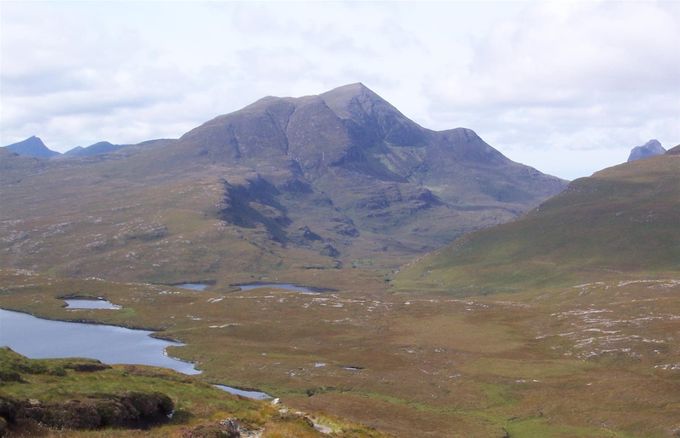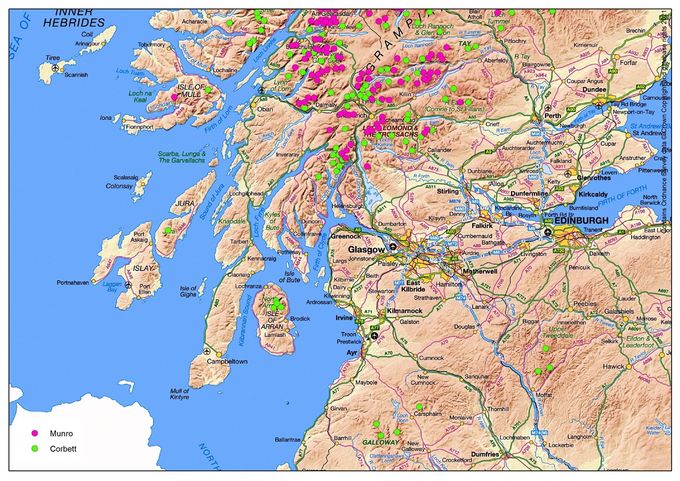THE NEXT PROJECT
Fuar Tholl. One of many spectacular Corbetts. Photo tms.nickbramhall.com
Towards the end of the 1990 relay there was a lot of talk about the possibility of achieving an average of a peak an hour. Also other relays were mooted, in particular one over the 498 Munros and Corbetts (Peaks between 2500 and 3000 feet.) Dave, John, Tony and I seemed particularly interested.
Tony planned a route over the Munro/Corbett relay involving the whole potential team starting in the south for the first weekend and really going for it, before those unable to take the time off returned for a week's work while a few members picked off the islands and more solitary western peaks. The team would then rejoin for a fortnight to carry on 1990 style. Dave, John and I all agreed in principal to join in but no-one got very enthusiastic and it never really got off the ground.
The idea held great appeal to me so I planned my own route to see if it could be done by a single team over a three week period. One major problem when sticking to the 1990 rules of using only standard sea going ferries was that two days would be virtually wasted, one in visiting Rhum for two Corbetts, and another for Jura's single Corbett. In both cases we would have to catch an early morning ferry and return in the evening. (No longer possible with modern timetables) Jura had the added complication of the need to cross the Isle of Islay. In addition to the sheer time spent hanging around, ferry timetables limited these trips to certain days of the week. In the end it was clear that there was no hope of completintg the relay in a sensible time span with these restrictions.
The northern Munros and Corbetts. Map Colin Matheson
I thus came up with the idea of having different rules and allowing trips to the islands to be done by any boat.
Thus a route was created that started in the early morning in the Western Isles to catch the standard ferry over the Minch to Skye. This then enabled the Skye ridge to be done in guaranteed daylight. A private boat would come into play for the trip to the mainland and then motor down to Kinlochhourn whilst the baton did the section south of Glen Shiel. The boat would then be used to get runners into and out of changeovers in remotest Knoydart, before sailing down past Mallaig where the baton would eventually arrive for the trip to Rhum and back. The baton would then move down through Ardgour whilst the boat moved to Lochaline for the trip to Mull and back. The boat would then have a fortnight off whilst the runners take in the rest of the mainland before the final boat trip to Arran and then straight to the finish on Jura.
Apart from the appeal of the islands the pattern was surprisingly different from the Munro relay with a considerably greater variety of leg length. The longest of a number of very long legs measured 27 miles, but there were also a number of very short ones allocated about 30 minutes.
Cul Mor, one of several stunning Corbetts in the North West. Photo Margaret Dearman
The southern Munros and Corbetts. Map Colin Matheson
There is no charge for reading this account but please consider donating to the RNIB, the charity we ran for.
Share this page



